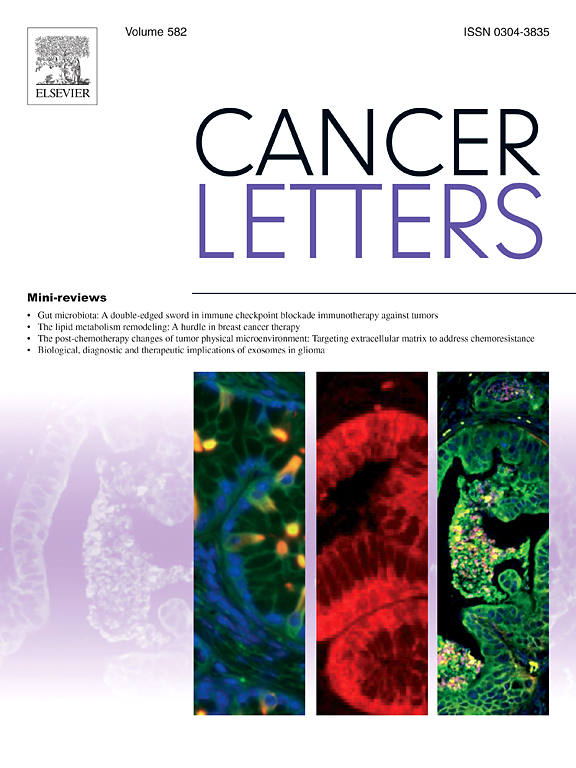Tumor-associated Schwann cells as new therapeutic target in non-neurological cancers
IF 9.1
1区 医学
Q1 ONCOLOGY
引用次数: 0
Abstract
Cancer neuroscience, a burgeoning field, investigates the complex interactions between cancer and the nervous system, emphasizing how cancer cells exploit neuronal components for growth and metastasis. Tumor-associated Schwann cells (TASc) have emerged as crucial players in the progression of highly innervated cancers, highlighting the intricate relationship between the tumor microenvironment (TME) and the nervous system. This review concludes how TASc, as the most abundant glial cell in the peripheral nervous system, contribute to tumor growth, metastasis, and the remodeling of the TME. Acting similarly to reactive astrocytes in the central nervous system, TASc are implicated in driving perineural invasion (PNI), a distinctive cancer progression pathway facilitating tumor infiltration and metastasis. These TASc not only contribute indirectly to pain but also promote tumor recurrence and poor prognosis. Intrinsic to their role, TASc exhibit unique gene expression profiles and phenotypic transformations, shifting from myelinating to non-myelinating states, thereby actively participating in metastasis and the remodeling of the tumor microenvironment. Targeting TASc represents a novel and promising therapeutic strategy in non-neurological cancers, offering new avenues for clinical intervention.
肿瘤相关雪旺细胞作为非神经系统肿瘤的新治疗靶点
癌症神经科学是一个新兴的领域,研究癌症与神经系统之间复杂的相互作用,强调癌细胞如何利用神经元成分进行生长和转移。肿瘤相关雪旺细胞(TASc)在高度神经支配的癌症的进展中起着至关重要的作用,突出了肿瘤微环境(TME)和神经系统之间的复杂关系。本文综述了TASc作为周围神经系统中最丰富的胶质细胞,如何参与肿瘤的生长、转移和TME的重塑。与中枢神经系统中的反应性星形胶质细胞类似,TASc参与驱动神经周围浸润(PNI),这是一种促进肿瘤浸润和转移的独特癌症进展途径。这些TASc不仅间接导致疼痛,而且促进肿瘤复发和不良预后。由于其作用,TASc表现出独特的基因表达谱和表型转化,从成髓鞘状态转变为非成髓鞘状态,从而积极参与转移和肿瘤微环境的重塑。靶向TASc为非神经系统癌症的治疗提供了一种新颖而有前景的治疗策略,为临床干预提供了新的途径。
本文章由计算机程序翻译,如有差异,请以英文原文为准。
求助全文
约1分钟内获得全文
求助全文
来源期刊

Cancer letters
医学-肿瘤学
CiteScore
17.70
自引率
2.10%
发文量
427
审稿时长
15 days
期刊介绍:
Cancer Letters is a reputable international journal that serves as a platform for significant and original contributions in cancer research. The journal welcomes both full-length articles and Mini Reviews in the wide-ranging field of basic and translational oncology. Furthermore, it frequently presents Special Issues that shed light on current and topical areas in cancer research.
Cancer Letters is highly interested in various fundamental aspects that can cater to a diverse readership. These areas include the molecular genetics and cell biology of cancer, radiation biology, molecular pathology, hormones and cancer, viral oncology, metastasis, and chemoprevention. The journal actively focuses on experimental therapeutics, particularly the advancement of targeted therapies for personalized cancer medicine, such as metronomic chemotherapy.
By publishing groundbreaking research and promoting advancements in cancer treatments, Cancer Letters aims to actively contribute to the fight against cancer and the improvement of patient outcomes.
 求助内容:
求助内容: 应助结果提醒方式:
应助结果提醒方式:


